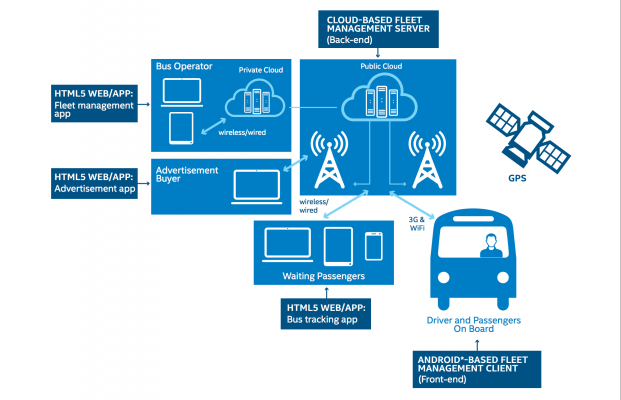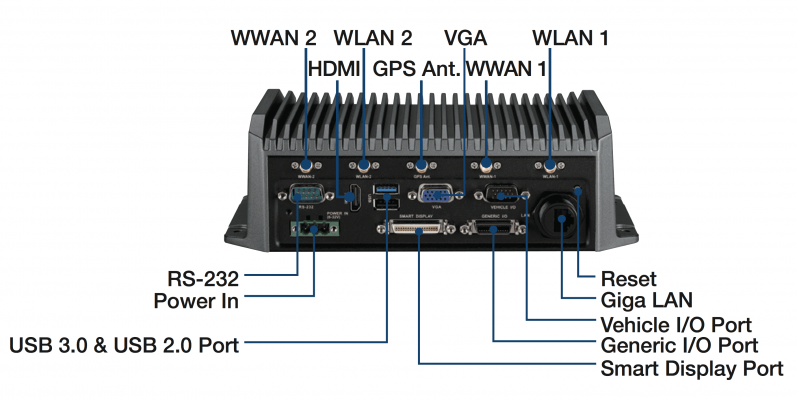Simplify Data Analytics for City Fleet Management
Data analytics and machine learning are jolting fleet management into the next gear. Take city buses, which changed little for decades. Then the IoT came along and, suddenly, fuel efficiency, routing, and driver behavior could all be optimized in real time.
“Could” is the key word. A city bus—sprinkled with sensors and cameras—can produce as much as 10 MB of data per mile. It's not viable to send all this data to the cloud. Instead, on-board computers must analyze vehicle performance, driver behavior, and road conditions.
Next, the on-board computer must send a summary of the data to the cloud. There, big data analytics can obtain deeper insights on maintenance needs, passenger boarding patterns, and other factors.
The Many Faces of Fleet Management
So what does it take to create fleet-management systems that can use big data, remote management, and even machine-learning technology? As illustrated in Figure 1, a good place to start is by looking at the individual subsystems that go into fleet management.

Figure 1. City fleet management involves many systems. (Source: Intel)
The on-board and back-end systems deserve particularly close attention. Let's start with a look at the on-board computer. A good example is the Advantech TREK-570 shown in Figure 2. Built specifically for fleet management, this embedded PC is equipped with I/O including configurable vehicle diagnostic interfaces: CAN (J1939, OBD-II/ISO 15765) and J1708 (J1587).

Figure 2. The TREK-570 is designed for fleet management. (Source: Advantech)
The TREK-570 also boasts a plethora of communication interfaces—802.11 a/b/g/n, GPS, GLONASS, HSDPA, CDMA, and LTE—to provide real-time voice and data services. Dual display and dual audio interfaces ensure that drivers receive high-resolution information like route plans and text-to-voice policy reminders.
All these features are powered by a quad-core Intel® Atom™ processor. “CPU performance is critical in data analytics,” says Shawn Jack, Director of Embedded Ecosystems at Advantech. “We chose an Intel processor primarily because of CPU and security features.” Jack adds that Advantech aligns its design capabilities and resources based on the Intel architecture roadmap.
Data Analytics Made Easy
After initial processing, data heads to backend systems for further analysis on driver behavior, dispatching, tracking, vehicle diagnostics, etc. Here's where fleet management hits another roadblock.
There aren’t many data scientists in firms offering fleet management services. Nor are there many data scientists within the city administrations creating smart transportation infrastructure. So how can fleet operators glean insights from logistics data?
The answer is to use systems with pre-defined configurations and built-in intelligence, so that organizations can easily interpret their data. And that's where holistic platforms like Advantech's WISE-PaaS RMM come into play. These platforms offer pre-configured and pre-validated software building blocks to jumpstart the deployment of fleet management solutions.
Within the vehicle computer, WISE-PaaS provides cloud hooks and APIs that simplify connection to services like Microsoft Azure. On the cloud side, it facilitates fleet management features like remote monitoring and predictive maintenance through simple drag-and-drop interfaces. This support can turn fleet management hardware like the TREK-570 into ready-to-run systems.
Seeking Transportation Breakthroughs
For companies like Advantech, the next frontier in fleet management and other digital transportation segments is mixing the power of big data with specialized automotive initiatives like vehicle-to-vehicle (V2V) and vehicle-to-infrastructure (V2I) communication technologies.
Advantech’s Jack says these technological breakthroughs in transportation will make drivers more aware of the roadside conditions and help them quickly respond to changes. The company is also employing big data to sense vehicle status in real time. For example, if the vehicle wipers activate, the backend office gets notified that it is raining.
Even with these advances, it is important to remember that fleet management systems still require careful engineering and smart operation. For example, the NextBus transit-tracking system in San Francisco experienced two weeks of outages and inaccurate arrival predictions—all because the system operators had failed to prepare for the shutdown of 2G cellular service. Having said that, using robust subsystems like the TREK-570 will help you breeze through basic design work so you can focus on trickier problems like minimizing opportunities for user error.